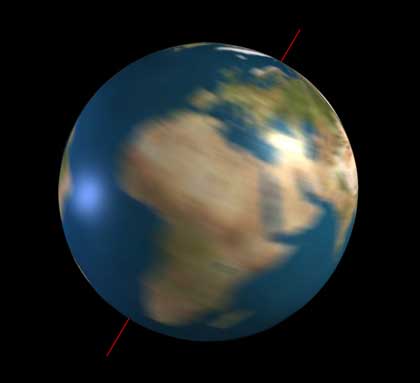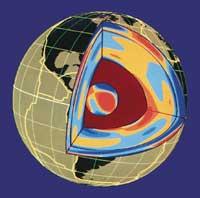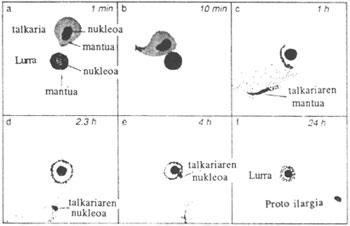Magnesium silicate and Earth rotation
2008/05/01 Elhuyar Zientzia Iturria: Elhuyar aldizkaria

The rotation of the Earth is slowing down and the Moon is guilty. However, the loss of speed in rotation is not constant; sometimes it accelerates and others slows down. No one knows why, but some geologists at the University of Tokyo have given a possible explanation.
The proposed explanation has to do with a mineral. It is believed that a type of magnesium silicate is abundant in the lower part of the Earth's mantle at 2,900 kilometers deep, and by its pressure, the mineral adopts a special form. This form gives the mineral a high electrical conductivity, so geologists consider that the lower layer of the mantle is conductive and, consequently, is affected by the magnetic field of the terrestrial core. If this is true, it is possible that the mantle leaps little about the core and, therefore, that these small leaps are also noticed in the rotation of the Earth.
Geologists have stated in the laboratory that the particular form of magnesium silicate is conductive and that it is influenced by the presence of iron in the vicinity (the core of the Earth is iron). These are data in favor of the Japanese hypothesis, but admit that there may be other explanations for the incidents of rotation.

Gai honi buruzko eduki gehiago
Elhuyarrek garatutako teknologia






